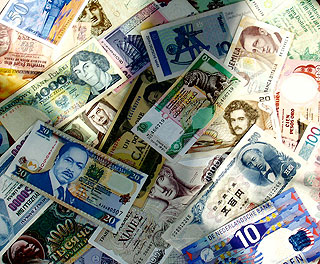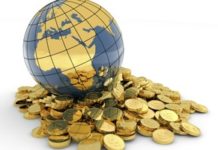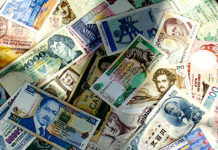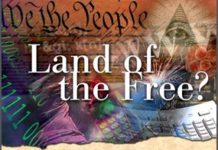I’ve said a number of times that if someone could come up with a monetary system that would not cause recessions, it would be worthy of a Nobel Prize. I’ve always said that kind of tongue-in-cheek, on the assumption that nobody would come up with anything, but I’ve decided to throw an idea out there myself. I do not expect a Nobel Prize, but I do hope to generate a lot of thought, and bit of discussion.
I’m going to break this up into two parts. Part one will be on what is wrong with the existing Federal Reserve System. Part two will cover what to replace it with, as well as how to convert to that new system.
Part one: The Federal Reserve System
The Federal Reserve Act was written in J.P. Morgan’s hunting lodge, and was drafted by the presidents of America’s big Wall Street banks, along with members of the Rothschilds family (England’s central bank), and the Warburg family (Germany’s central bank).
The Federal Reserve has caused every recession we have had since its inception, with the possible exception of the one we are now probably falling into – which will be the first virus-caused recession in our nation’s history.
At the time the Federal Reserve Act became law, independent banks outside New York controlled just over half of all banking operations in the United States. The Federal Reserve Act gradually bankrupted those banks, and returned ownership of virtually all banking to Wall Street.
The Federal Reserve Act allowed the Wall Street Banks to profit on all federal debt.
Guess what has happened to our federal debt since the Fed was created…
Under the Federal Reserve Act, every dollar created is offset by a dollar of debt, meaning that for one person to have wealth, others must be indebted. The Treasury maintains $861 billion in paper and coin currency. Every other dollar in existence nets to zero.
The supply of money must grow as the economy grows, causing a need for the country to always create more debt. Because of this, certain life events force people into debt, even if they are careful not to go into debt. Want college? Go in debt. Get married? Go in debt. Get sick? Debt. Have children? They’ll go to college and get married – causing debt.
Debt, debt, debt, debt, debt!
The fact that most Americans are deeply in debt, and that we need to work to repay that debt – this is what backs the US dollar.
And all of that debt profits the Wall Street banks.
Two days ago, the Fed gave the Wall Street banks $1.2 trillion dollars, and has now lowered interest rates to zero, so that the Wall Street banks can invest in the stock market with your money, at no charge.
Federal debt is a promise by the government to tax the people more tomorrow than they are taxed today. Federal debt is a promissory note from the government to the Wall Street banks, in which the government promises to give those banks more of your money, and more of whatever money your children might earn, at some point in the future. And of course, the Wall Street banks profit off both the debt itself, as well as its repayment.
Trump ran for President talking about gold standards, and the possibility of ending the Fed. Since becoming President he has had a change of heart. He no longer talks about ending the Fed, but instead admonishes the Fed for not ‘easing’ the money supply, which in the short term can grease the economy (by flooding the Wall Street banks with money), but in the long run debases our currency (which also profits the Wall Street banks). Joe Biden favors the Fed as well.
No matter who you vote for, the Fed wins. If you do not vote for someone the Fed likes, the Fed buys them. If the Fed cannot buy someone – the last person who the Fed could not buy was John F. Kennedy…
The Wall Street banks do not make money on stock market growth, so much as on stock market volatility. The more volatile the stock market, the more money those banks make. This also makes it harder to save for your retirement, as it makes investing riskier, but your risk profits the banks, so it’s all good for Wall Street.
Social Security invests in what? Federal debt. The Wall Street banks profit off federal debt, so while Social Security is a bad deal for America’s retirees, it is a GREAT deal for the Wall Street banks!
While the Wall Street Banks were initially hurt by both the Great Depression, and the Great Recession, they were bailed out in short order, and were pumped full of all the money they could ask for. We answer recessions by flooding the Wall Street banks with money, which is eventually paid for by the American taxpayer. Recessions in this way become giant transfer payments from the working class to the rich bankers – giving the bankers a good reason to cause the occasional recession. The deeper the recession, the better it is for the Wall Street banks.
The more the government grows, the more it spends. The more government spends, the more debt it creates. The more debt government creates, the more the Wall Street banks profit.
One year after the Federal Reserve Act passed, England and Germany went to war (along with the rest of Europe). The war was funded by the central banks of England and Germany, which was incredibly profitable to the Rothschild and Warburg families.
During the war, England used JP Morgan to finance war spending in the United States, borrowing almost as much from JP Morgan as from England’s Central Bank.
Woodrow Wilson had the Lusitania loaded with munitions (for ballast – ships usually use water) during WWI. German spies photographed the Lusitania being loaded with munitions, and warned Woodrow Wilson that they would sink that ship. Germany tried to run full-page advertisements in every American newspaper, warning Americans not to sail on the Lusitania, as Germany was going to sink it. Woodrow Wilson ordered American newspapers NOT TO PRINT THAT ADVERTISEMENT (one newspaper in Arizona printed it anyway), and 1,198 people – mostly Americans – boarded the ship.
It was against international law for the United States to absorb England’s war debts without the United States entering the war, so as England stood on the brink of bankruptcy (which would also have bankrupted JP Morgan), Germany sank the Lusitania, and America entered the war. The Federal Reserve immediately absorbed all of England’s war debt held by JP Morgan. England’s war debt became America’s war debt, and the war continued. JP Morgan profited tremendously.
There is a revolving door between the Federal Reserve and Goldman Sachs, blurring the line between the two. If we assume that Goldman Sachs runs the Fed, then the Chairman of Goldman Sachs is arguably more powerful than the President of the United States – and I’ll bet you do not even know his name.
I mentioned John F. Kennedy. I’m not going to speculate on his assassination, but I do want to point out that Kennedy was adamant that America would not put boots on the ground in Vietnam; our role was to stay strictly advisory. When Kennedy was killed, and Lyndon B. Johnson became President, one of the first things Johnson did was to put American troops in Vietnam.
Lyndon Johnson paid for the war by borrowing money.
The Vietnam War benefitted two groups. One group was, of course, the defense industry, but by borrowing money to pay for the war, Lyndon B. Johnson was also allowing the Wall Street Banks to profit off the war, through their ownership of the Federal Reserve.
Unlike the wars in Iraq and Afghanistan, which we fought ‘on the cheap’ without expanding the size of our military, we expanded the size of our military a great deal for Vietnam. The war cost a great deal of money.
We were still on the gold standard when Johnson borrowed money to fund Vietnam, and when Nixon took office, he was facing a run on our gold, which he avoided by taking the United States off the gold standard.
Taking the United States off the gold standard removed any limitations to Fed actions, and exponentially expanded the powers of the Federal Reserve.
We really do need to end the current Federal Reserve. It’s a corrupt system that has done untold levels of harm. The question is, “What do we replace it with.”
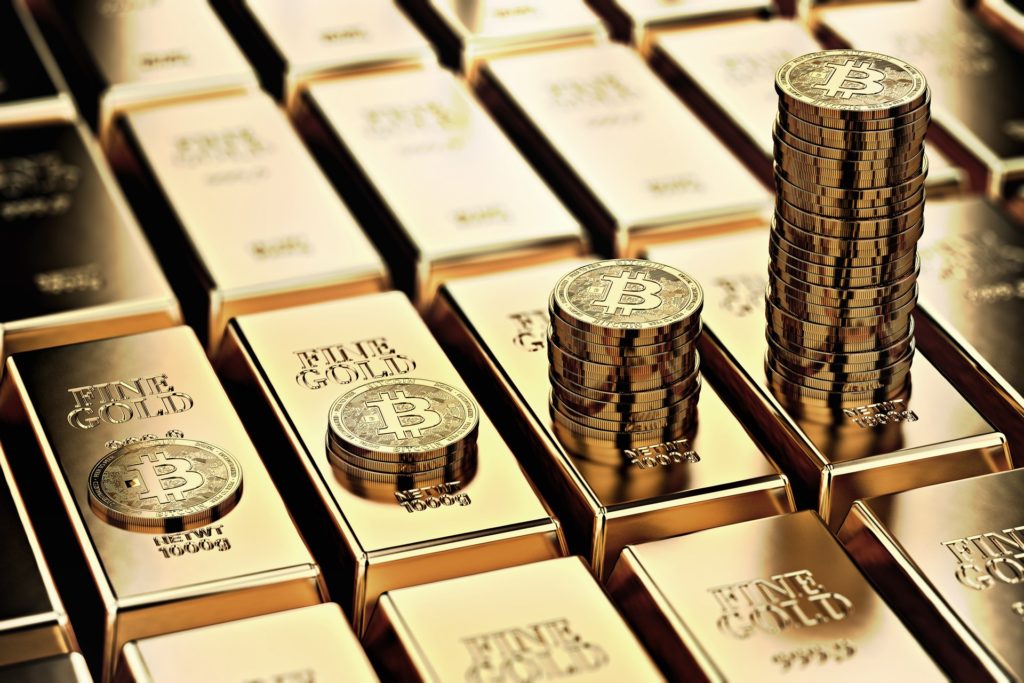
Part Two: A New Monetary System
The obvious replacement for the Federal Reserve is a gold standard, and my solution will be based on one, except that under my solution, a new Federal Reserve would manipulate the transfer rate between gold and dollars, in order to keep the value of the dollar constant, even as gold prices rise and fall relative to other things. Gold is remarkably stable over the long haul, but as new gold supplies are found, and old ones dry up, gold can move quite a bit in the short term, causing recessions. To have a recession-proof gold standard, we would need the Fed to adjust the transfer rate of dollars to gold, smoothing-out short term fluctuations. We might call this new system a floating gold standard.
The Fed should remain independent, but the dual mandate should be eliminated, and private companies should not have ownership of the Fed. The Fed should be a non-profit organization, and it’s only jobs should be to manipulate bank reserve requirements (the amount of physical currency banks have to hold) such that we do not see runs on banks, to deal with bank runs when they do occur (as the Fed does now), and to maintain a stable supply of money. Those operations could be done almost entirely by computers, removing most of the subjectivity, and eliminating Federal Reserve actions aimed at manipulating the economy.
I believe this to be a very workable system, but the question of how to get there from here remains…
There is an open question about how much money we can print, and/or circulate, relative to the amount of gold we have. Luckily for us, we know how much gold the Treasury and Federal Reserve hold, and we know the market rate for gold. The current market rate of gold is the best-guess for what the transfer-rate of gold should be, were we to introduce a gold standard immediately, based on all of the money in circulation today.
Gold prices, unfortunately, fluctuate relative to other things, so while we can call the current market price of gold the best guess for a transfer rate, we cannot say with any certainty that this guess is 100% correct. I would suggest a gradual transition to a floating gold standard.
The real problem is not one of too much, or too little money, nor one of too much, or too little gold. The real problem is one of too much debt. Both the government, as well as the private sector, are completely saturated in debt.
We have to find a way to convert electronic, debt-based money, to physical currency, without increasing the amount of money in circulation. Only after we do that would I suggest making a floating gold standard.
I would have the treasury buy federal reserve notes (reducing federal debt) off the market, and paying for the federal reserve notes by printing physical currency. Every dollar of debt the Treasury pays off would eliminate a dollar in electronic currency. The Fed would be replacing that electronic currency with physical currency, and the Fed could play with bank reserve requirements to prevent banks from going crazy with lending so that this remains a literal one-to-one transfer of electronic money to physical currency. The Fed would then destroy the savings bonds it has purchased, eliminating the debt.
The Federal Reserve holds $2.38 trillion in federal bonds. Some of that the Fed might be able to just write off – much of the rest it can sell on the open market. Banks could buy those bonds, and then sell them to the Treasury, which would pay for them with paper currency.
The goal is to reduce the quantity of money backed by debt, replacing it with physical currency, while using bank reserve requirements to prevent banks from writing loans with the new paper currency. Once our federal debt is under control, the Treasury would have more options for handling hiccups involved in guessing the transfer-rate of gold to dollars, and a transition to a floating gold standard would be much less risky.
The US dollar is the world’s reserve currency, and as a result a tremendous amount of dollars, as well as dollar-denominated debt, circulates overseas. We would have to have a way to prevent those dollars from being converted to gold, and THAT would be tricky.
I would have strict requirements in place for transferring dollars to gold, and would have those requirements lifted gradually, as the Fed reduces the supply of electronic money overseas. Requirements could start with rules like, only a US citizen can transfer dollars to gold, only physical currency can be used to transfer into gold, and a person can only transfer $20 a day. As the world’s supply of electronic dollars comes down to a level our gold reserves can support, those requirements could be loosened.
If a bank is protected by the FDIC, then the Federal Reserve can use reserve requirements to restrict lending. Foreign banks are not protected by the FDIC, so we only need to worry about reserve requirements with US banks. Foreign banks would have time to adjust by reducing lending rates denominated in US dollars, and if a run on US dollars overseas causes foreign banks to go under, that’s on them…
We would probably lose our standing as the world’s reserve currency, but as long as the dollar is stable, who cares? Foreign countries would still accept our dollars, knowing that they can buy US goods and services with them. Trade would become more reciprocal.
At some point, gold would be fully transferable, and the Fed’s only role would be too maintain a stable supply of money in circulation through changes in bank reserve requirements, and changes in the price at which the dollar transfers to gold. Re-instating transfer rules could also be used as an emergency measure to stave off a run on our gold supplies, and there would be no dual mandate – employment would take care of itself.
The end result would be a dollar that has zero inflation, where gold acts as a back-stop against excess borrowing, and in which the dollar does not fluctuate with short-term changes in the value of gold.
The new Fed, though independent, would not be owned by the banks, eliminating the corruption we see in the current Federal Reserve.
And there you have it – a new system of money, backed by gold, but without the problems a gold standard normally carries.
If you like this – or even if you don’t – please share, comment, and discuss. We need a new monetary system, and I hope this post triggers some real discussion in that direction.






